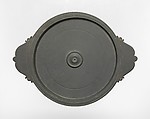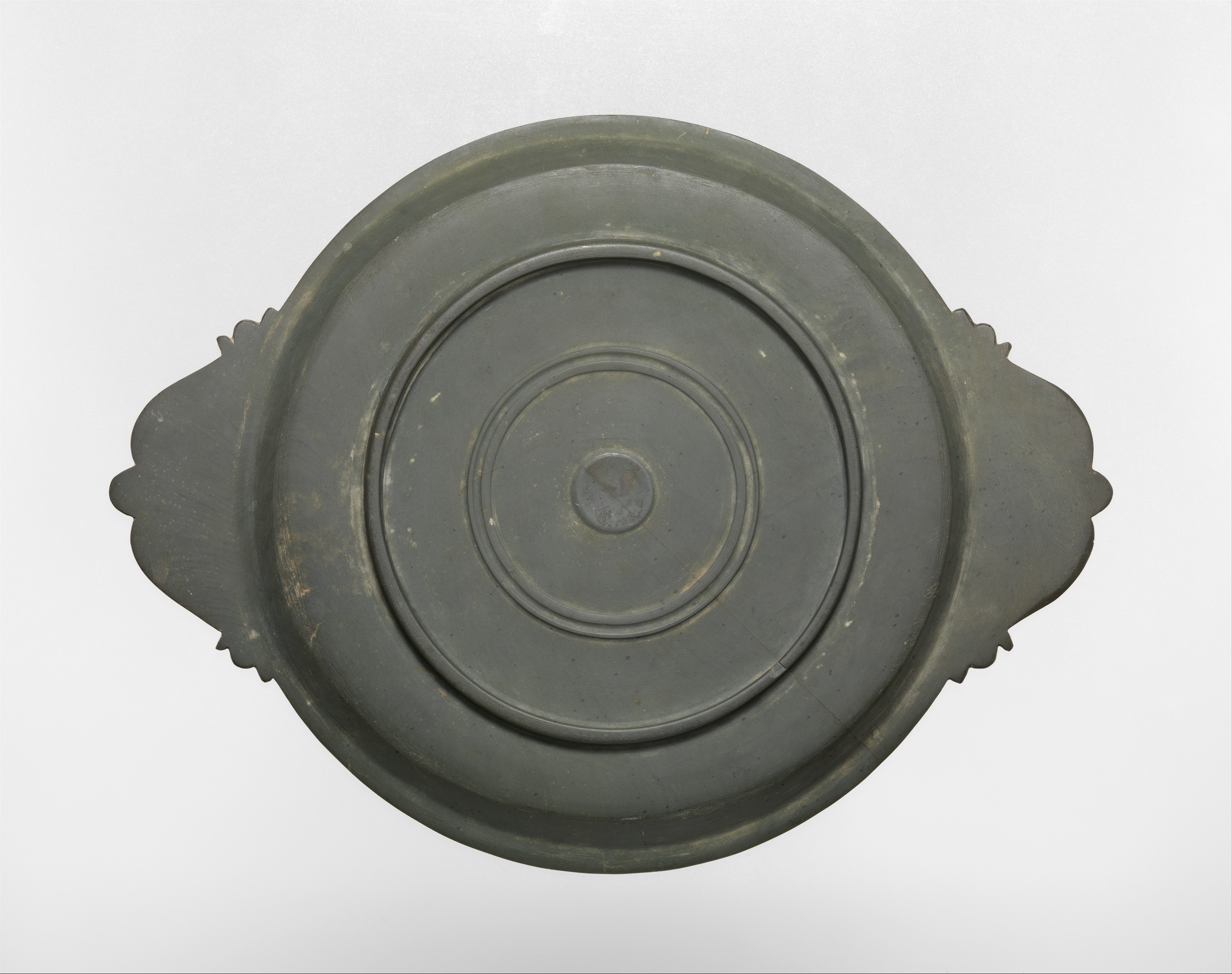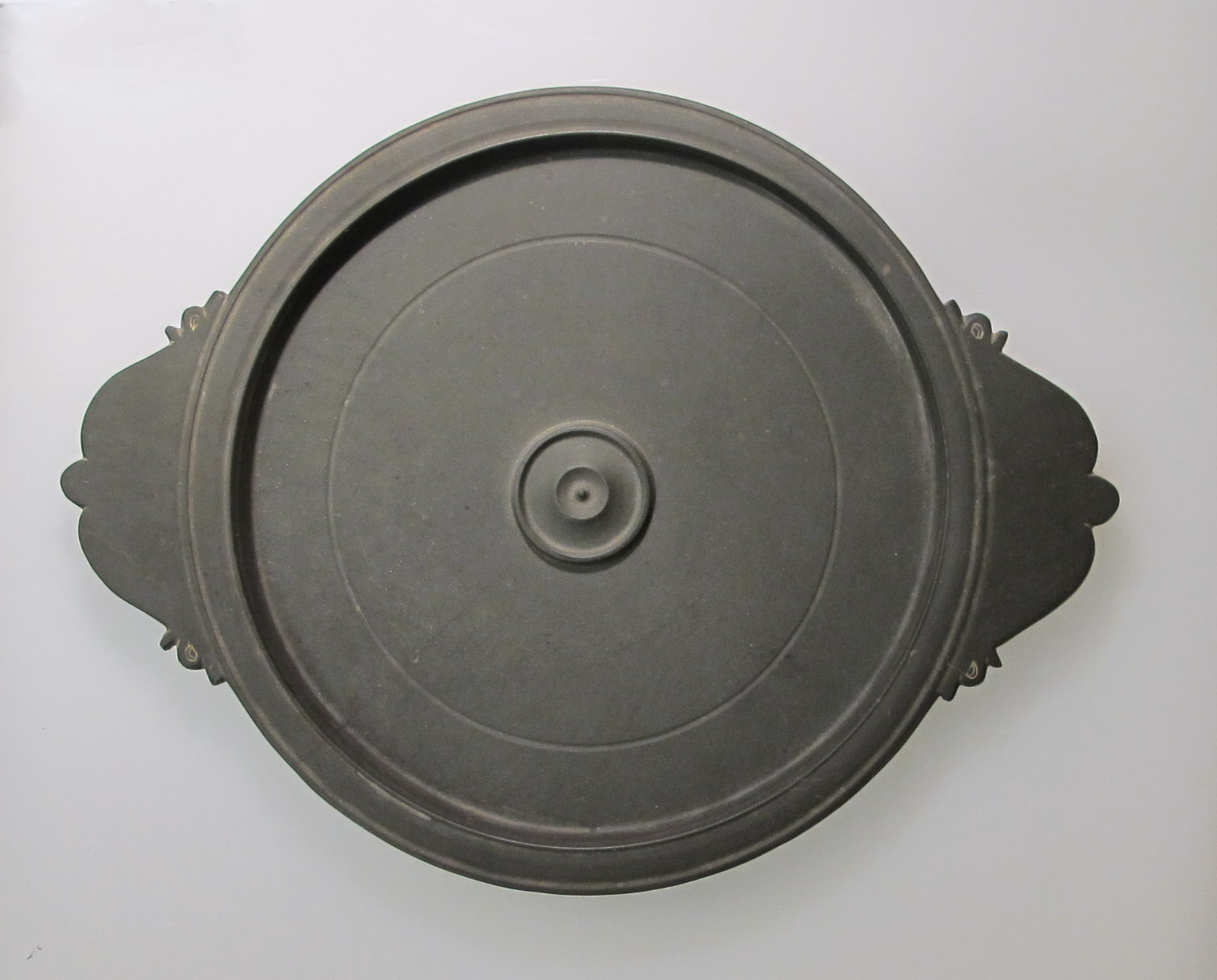Greywacke plate
A flat, circular plate, carved on a lathe, with a narrow, raised rim and two solid and integral projecting handles on sides of the rim, opposite each other. On its upper surface, a low raised boss decorates the center of the plate, comprising an outer raised circle, a raised cone-like band, a small circular depression, and a raised central dot; a groove forms a circle around the bottom towards the low, almost vertical side. The horizontal rim is outlined by an inner and outer ridge with two concentric grooves on its upper surface, one running around the entire rim, the other only where the handles are attached. The handles are carved out into simplified volutes with animal-headed finials, with ear and snout or beak in profile, and an eye outlined by hand. On the underside, there is a plain base ring on the bottom; within it, the bottom is decorated with a small raised disk surrounded by two concentric raised circles, the inner of which is wider than the outer. The side has a shallow curving profile. The inside is highly polished, but the underside has been left with traces of its carving and working.
Greywacke, a type of dark sandstone, was used in Egypt from Predynastic times onward. Only one ancient quarry is known, located in the Wadi Hammamat, that bears evidence of its exploitation in Roman times. Wealthy Romans were fond of vessels made of semiprecious and exotic stones, and some became avid collectors of costly examples. Such vessels were intended more for display than practical use. Rare in ancient times, few have survived; the well-preserved condition of this piece makes it even more precious.
Due to rights restrictions, this image cannot be enlarged, viewed at full screen, or downloaded.
This artwork is meant to be viewed from right to left. Scroll left to view more.




